Water is one of our most valuable resources, yet traditional plumbing systems often lead to excessive waste. As the demand for sustainable building practices grows, professionals across the trades are adopting smarter, more efficient plumbing solutions to conserve water and reduce environmental impact. From low-flow fixtures to rainwater harvesting systems, modern plumbing innovations are transforming Read more
sustainable construction
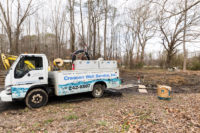
Water is one of our most valuable resources, yet traditional plumbing systems often lead to excessive waste. As the demand for sustainable building practices grows, professionals across the trades are adopting smarter, more efficient plumbing solutions to conserve water and reduce environmental impact.
From low-flow fixtures to rainwater harvesting systems, modern plumbing innovations are transforming how buildings manage water. Here, we’ll explore key advancements that improve efficiency, meet environmental regulations and support long-term sustainability.
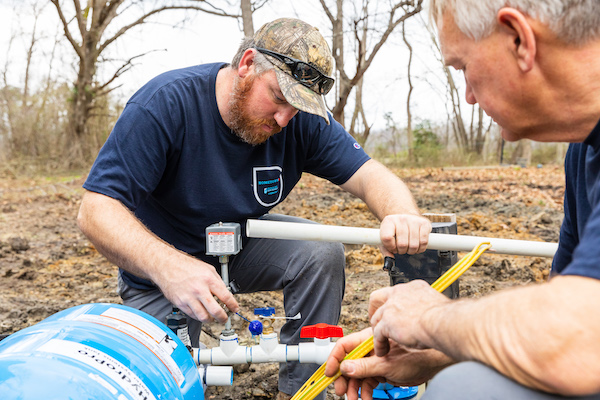
Water-Efficient Fixtures: Reducing Consumption Without Sacrificing Performance
One of the simplest and most effective ways to enhance sustainability in construction is by installing water-efficient fixtures. Low-flow toilets, showerheads and faucets significantly reduce water usage without compromising performance. These fixtures are designed to maintain strong water pressure while using less water per flush or flow cycle.
Beyond traditional fixtures, advanced sensor-activated faucets and dual-flush toilets offer even greater efficiency. These innovations allow users to control water flow precisely, preventing unnecessary waste.
Many modern buildings are also incorporating smart plumbing systems that adjust water usage based on occupancy, further improving conservation efforts. By upgrading to these high-efficiency fixtures, buildings can significantly cut down on water consumption and reduce utility costs over time.
Rainwater Harvesting: A Smart Solution for Water Reuse
Rainwater harvesting systems provide a sustainable alternative to traditional water sources by capturing and storing rainwater for non-potable uses such as irrigation, flushing toilets and cooling systems. This method reduces demand on municipal water supplies and lowers utility costs for homeowners and commercial properties.
Plumbers design and install these systems, focusing on effective filtration and distribution. With advancements in water treatment technology, more buildings are incorporating rainwater for potable uses, making sustainability efforts even more impactful.
By implementing rainwater harvesting in new builds or remodeling projects, tradesmen contribute to long-term water conservation while offering clients cost-effective, eco-friendly solutions. These systems are particularly valuable in regions with inconsistent rainfall, helping buildings maintain self-sufficiency.
Greywater Recycling: Repurposing Water for Maximum Efficiency
Another effective strategy for sustainable construction is greywater recycling. Greywater – wastewater from sinks, showers and laundry – can be filtered and reused for purposes like landscape irrigation and toilet flushing.
Plumbing systems designed for greywater reuse divert water before it reaches the sewer, treating it through basic filtration processes. This reduces reliance on freshwater sources and minimizes wastewater discharge, making buildings more sustainable.
Professional tradesmen installing these systems must adhere to local regulations and maintain proper filtration to prevent contamination. That said – with the right setup – greywater recycling can cut residential water use substantially, offering significant savings while promoting conservation.
Leak Detection and Smart Water Management
Advanced leak detection technology helps prevent unnecessary water waste by identifying leaks early. Smart water meters and sensors monitor usage patterns and alert property owners to irregularities, allowing for quick intervention.
For tradesmen, integrating these technologies into new builds or renovation projects provides clients with real-time control over their water consumption. Smart plumbing systems can also automate water shutoff in case of major leaks, protecting properties from costly damage while enhancing efficiency.
These innovations are especially beneficial in Utah kitchen remodeling projects, where sustainability is becoming a key focus. Upgrading kitchen plumbing with smart leak detection and water-efficient fixtures not only conserves water in the region, but it also increases long-term value for homeowners.
The Future of Sustainable Plumbing
As building codes and environmental regulations continue to evolve, tradesmen must stay ahead of sustainability trends. By embracing these innovations, tradesmen can enhance their expertise, offer more value to clients and play a vital role in shaping the future of sustainable construction.
With smart plumbing solutions, buildings become more efficient, resilient and environmentally responsible – showing that sustainability and performance can go hand in hand.
AUTHOR BIO: Bryant Ballman is the Owner of Bryant Construction, a well-established Utah general contractor specializing in remodels, basement finishes and custom builds. With over 35 years of experience in the general contracting industry, he brings keen attention to detail and a commitment to delivering high-quality craftsmanship. Ballman’s expertise ensures that every project is completed to exacting standards, whether it’s transforming a space or constructing a new one from the ground up.
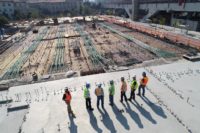
Advanced green building solutions, which include materials that are safer to use and more environmentally friendly, benefit not only the end customer, but also those involved in the construction work. Those who want to be a part of the future, need to know them right now. Companies need to be organized and prepared for the Read more
Advanced green building solutions, which include materials that are safer to use and more environmentally friendly, benefit not only the end customer, but also those involved in the construction work. Those who want to be a part of the future, need to know them right now. Companies need to be organized and prepared for the future. When you consider warehouse organization and layout is deceptively complex, so you need to ensure that you have enough space for your business needs as the green industrial revolution continues- new materials, new equipment will all be key.
Anyone who thought the green approach was a passing fad has discovered in recent years that this is a trend that has no intention of disappearing. Environmental awareness is intensifying and with it come solutions and tools designed to preserve the environment for us and for future generations. The construction industry has played a significant part in the success of this trend, and the term “green construction” is becoming commonplace in the mouths of customers and suppliers alike. Green construction is an approach designed to create a healthier living, working and living environment through the use of non-toxic materials and energy and resource savings, while minimizing the damage caused by manufacturing and transportation processes. The impact of green construction, which begins at the project planning stage and applies to field personnel and the end customer alike, is reflected in the reduction of the carbon footprint and the creation of advanced alternatives to a variety of materials, processes and approaches in the construction industry.
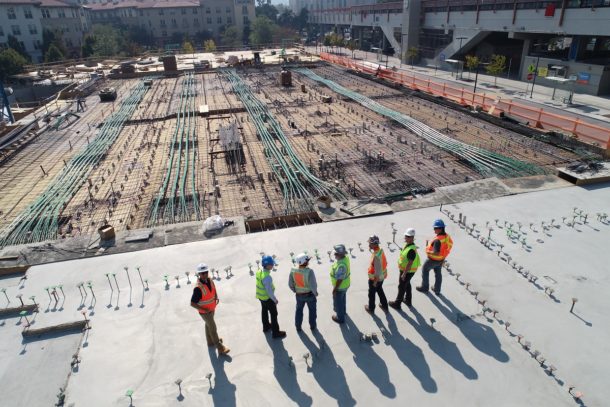
Photo Supplied by Unsplash
In order to ensure uniformity and compliance with the conditions that define a product or service as green, an international standard is being developed, and in fact starting in 2021, the green building standard will become mandatory in many countries. This means that standards and certifications such as green mark, LEED (American certification, which meets green accrual points), LCA (life cycle assessment, which is an assessment of the degree of impact the product or process has on the environment) and others will become mandatory for all construction workers.
A.C. Advanced construction technologies, which provide a wide range of advanced solutions to the construction industry, are working to implement the green approach in the industry even before these standards have become mandatory. The company believes in green construction and the good it brings to the environment, work implementers and all people, and in recent years has increased its activity in the field and expanded its line of green products. The solutions that the company offers, in areas such as sealing, finishing materials, industrial floor coverings, restoration materials, concrete repair and protection and more, express technological innovation, and ensure savings in time, labor and other resources, while maintaining high quality and meeting the most stringent standards.
Green in all colors is the future
The idea behind these new green products is to create advanced and groundbreaking alternatives for the construction industry, with the aim of enabling green construction while maintaining a high and uncompromising construction standard. Be part of the global revolution because it is leading the construction industry in 2021 and there are many industries that are looking into this for the future, including certain airports and car manufacturers. By using sustainable buildings for the future, it allows long term costs to be cut and the future of the planet can be saved.
Green construction is also light construction. Simple methods of thermal insulation for roofs and windows, maximum utilization of wastewater, use of renewable energy sources such as solar and wind along with reducing construction and maintenance costs. This is as a result of in-depth research done in recent years by engineers and green bodies. Compliance with the standard for green construction, allows your home to save about 30% in energy consumption, about 75% in water consumption, recycling construction waste and preserving the quality of the building’s surface. This advanced construction is the future of the construction world. More and more standards related to green building are being enacted into law, public awareness is rising, demand is expected to grow and it is to be hoped that one day the government will also recognize the environmental need for smart construction and subsidize it. It can bring about future jobs, and create a better future for the construction industry. As more and more people follow suit, we will see a huge shift over the next couple of years, for more and more businesses within the industry to become more sustainable.
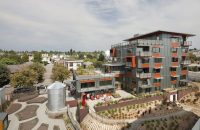
Green construction focuses on increasing the efficiency of the use of resources in the construction process – energy, water and materials – while reducing the environmental impact of the construction process and the use of the building. In recent years, a new profession has been born – green construction mentors, who are guided directly into Read more
Green construction focuses on increasing the efficiency of the use of resources in the construction process – energy, water and materials – while reducing the environmental impact of the construction process and the use of the building. In recent years, a new profession has been born – green construction mentors, who are guided directly into professional and experienced planning teams. Everyone who has studied the basics of economics understands that the right to exist for a new product in the market is demand. In the absence of taking responsibility for the architects themselves and full control over the details, it led to the creation of training for the green construction lenders and their placement within the planning team as “supervisors” of the architect’s work. There are many ways to implement a sustainable future; from the suppliers you use, the equipment you use and the way in which you plan things, click here for more info.
Action must be taken to promote sustainability in planning. This is a positive statement that expresses general and non-binding empathy with the field of sustainability, the way to create change is to act first within your own industry, then guide others. The architects help in promoting the field of sustainability. The tendency to engage in form rather than content is familiar to everyone involved in the field and for many years we tended to delve deeper into the aesthetic aspects of buildings while closing their eyes on the environmental impact. We can be wrong. We are faced with the expected increase in the eyes of the world and the resulting overcrowding, as well as due to the climate crisis, there is almost no place to place the shape of the building and its aesthetics at the top of the scale. Some countries are leading the way, such as Switzerland and Germany. They are looking into renewable energy and completing the switch by 2030.
Principles of sustainability
The guiding principle in green construction is that long-term thinking and early planning of the environmental aspects of the project, will lead to a higher quality final product, more convenient to use, considerate of natural resources and sometimes even economical in direct costs of operating the structure. Green builders usually seek not only to achieve ecological harmony, but also aesthetic harmony between the building and its natural environment, although it is not always possible to distinguish between a green building and an unsustainable building. The potential for selling green buildings, and when living in them, will not save expenses Not only for electricity and water, but also for health.
The criteria that define a green building are proper design of the building structure for maximum utilization of solar heat, thermal insulation of the building envelope, use of building materials and furniture that do not emit volatile organic compounds, installation of water-saving accessories, use of recycled materials. Also, of course, the installation of efficient systems for heating and cooling the building. Many countries have developed their own standards of energy efficiency for buildings. It’s time to look into the future, because the profits all begin with a sustainable future.
